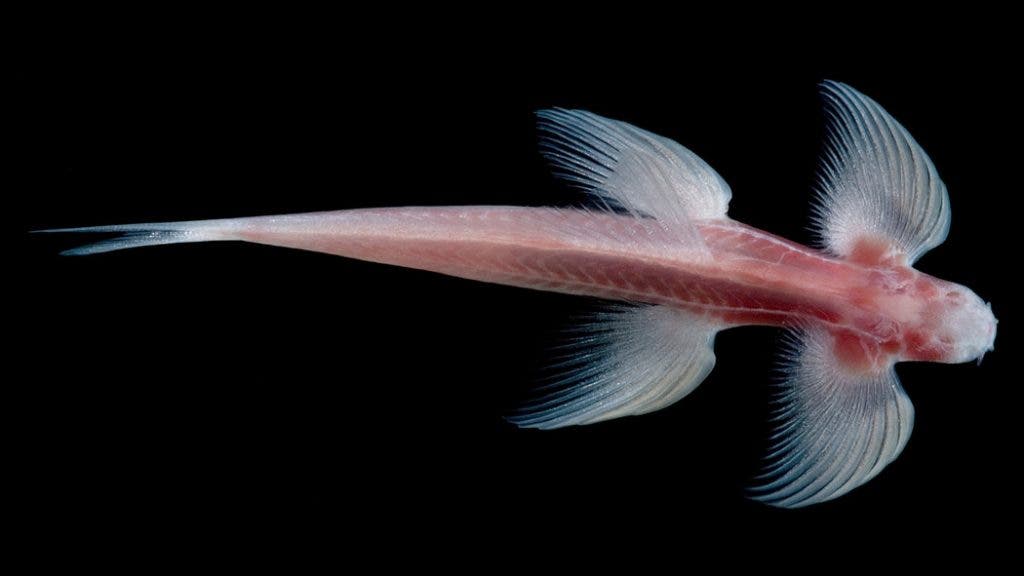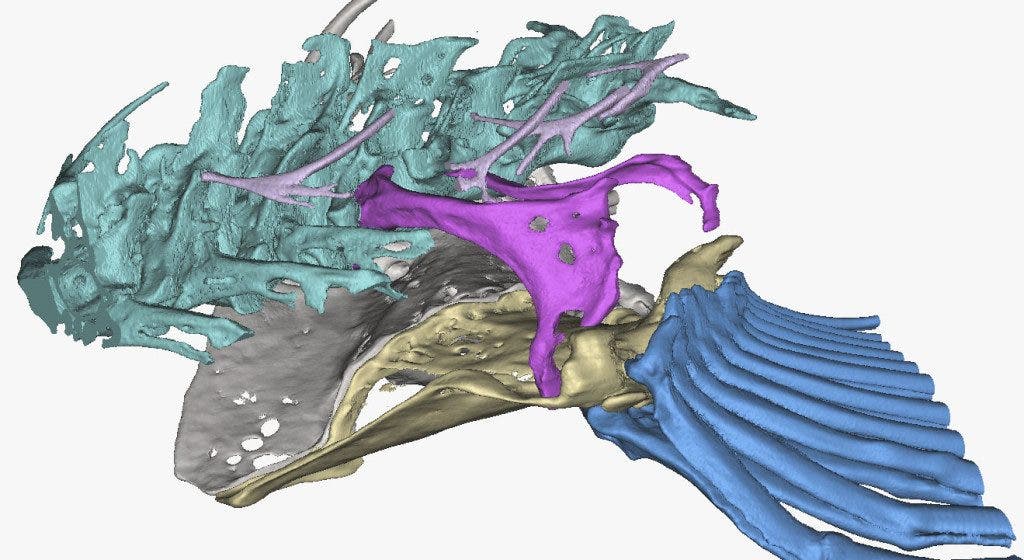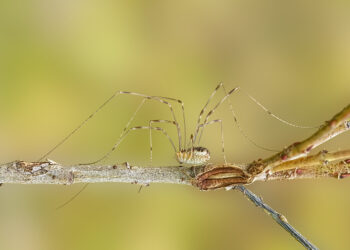Found in only eight caves on the border of Thailand and Myanmar, this eyeless fish can walk. It wouldn’t be the first, but what’s unique about it is the mode of locomotion that resembles that of land vertebrates like salamanders. Now, researchers have used high tech tools to image the creature’s skeleton and confirmed that it indeed bears land-walking characteristics, including a full-blown pelvis. Studying the creature might help science better understand one of the most epic journeys complex life has ever undertaken: from the sea to land.

Cryptotora thamicola was first discovered in 1985, native to a intricate cave system in Thailand. Unlike other fish that linger in the caves’ pools, C. thamicola climbs slippery rocks with no consideration for the crashing water that hits it from above.
Many Asiatic fish species, like those of the genus Ophiocephalus, have evolved special cavities over the gills that are adapted to retain moisture and aid in respiration, allowing them to travel considerable land distances. These kind of ‘walking’ fish move themselves forward by using the pectoral fins like clutches in a hopping motion. C. thamicola, on the other hand, moves about in a way that hasn’t been encountered in any other species. It takes steps, for lack of a better word, moving one of its front fins in time with a back fin from the other side of the body. This diagonal two-step movement is very much akin to those used by certain amphibians like salamanders, despite C. thamicola is more closely related to a gold fish.
The fish is extremely rare with only 2,000 specimens at large, by the most recent estimates. As such, the Thai government is very protective; it doesn’t allow specimens being taken to labs for studying, nor are museums licensed to dissect preserved individuals. These perfectly reasonable limitations were circumvented by thinking outside the box and using all the modern tools at the researchers’ disposal.
Apinun Suvarnaraksha, a biologist at Maejo University in Thailand, filmed Cryptotora thamicola in its natural habitat from many angles. These were sent to Daphne Soares and Brooke Flammang, both of the New Jersey Institute of Technology where they have their own lab to study fish locomotion. After watching the first videos, the pair of researchers were flabbergasted. “I was like, ‘Fish can’t do that,’” Flammang told Wired. “That’s ridiculous.”
The videos themselves, though telling, weren’t enough to thoroughly explain the fish. Suvarnaraksha was eventually granted permission to make a CT scan of one specimen from a local museum. Computer tomography is similar to X-ray, only instead of finding the outline of bones and organs, a CT scan machine forms a full three-dimensional computer model of a patient’s insides. Doctors can even examine the body one narrow slice at a time to pinpoint specific areas. This is an obviously non-destructive procedure.

The CT images were used to make a 3D model which showed all the bones and insides of Cryptotora thamicola. The waterfall-crawling fish’s pelvis is a complex of bones that is fused to the spine by elongated ribs. Strikingly, this is basically the same arrangement tetrapods evolved more than 350 million years ago to walk on land and pave the way for land life.
“Functionally, it makes perfect sense, but to see it in a fish is incredibly wild,” Dr. Flammang said.
“This research gives us insight into the plasticity of the fish body plan and the convergent morphological features that were seen in the evolution of tetrapods,” she added.
The findings appeared in the journal Scientific Reports.






